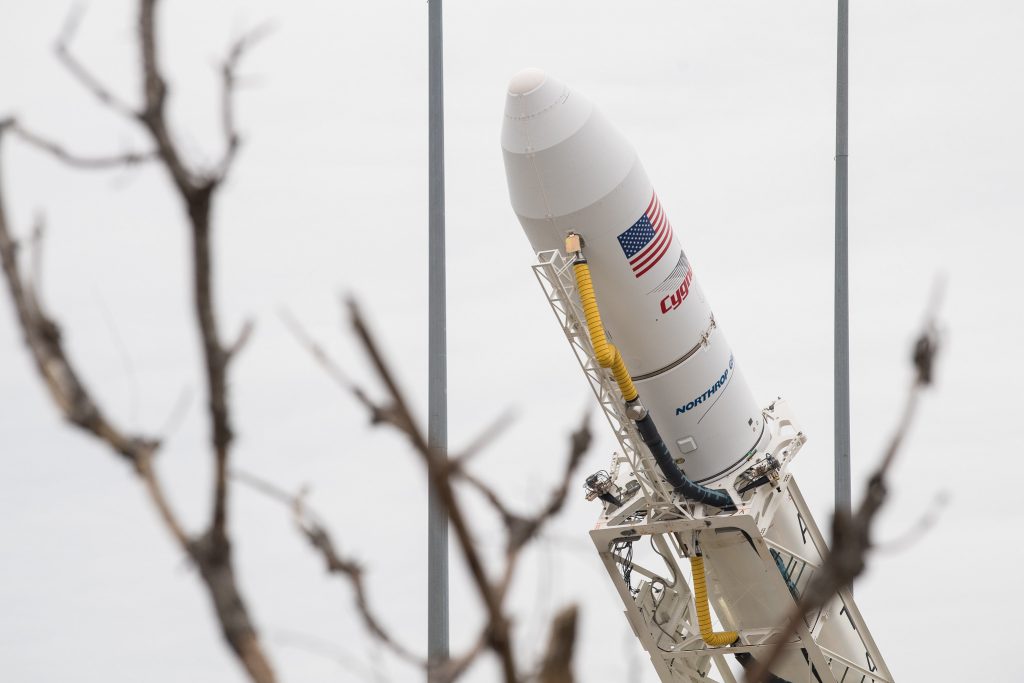Northrop Grumman’s next NASA-contracted commercial resupply services mission to the International Space Station is targeted for launch at 3:43 p.m. EST, Friday, Feb. 14. Live coverage of the launch will begin at 3:15 p.m. on NASA TV and the agency’s website.
The company’s 13th commercial resupply services mission will launch its Antares rocket, carrying its Cygnus cargo spacecraft, from the Mid-Atlantic Regional Spaceport at NASA’s Wallops Flight Facility in Virginia. On Feb. 9, Northrop Grumman scrubbed its Antares launch after off-nominal readings from a ground support sensor. The Antares rocket and Cygnus spacecraft remain healthy.

Loaded with approximately 7,500 pounds of research, crew supplies, and hardware, the Cygnus spacecraft, dubbed the SS Robert H. Lawrence, will arrive at the space station Sunday, Feb. 16 at about 4 a.m. EST. NASA Flight Engineer Andrew Morgan will grapple Cygnus and NASA astronaut Jessica Meir will be acting as a backup. After capture, the spacecraft will be installed on the Unity module’s Earth-facing port.
NASA TV coverage of the spacecraft’s arrival will begin at 2:30 a.m., and installation coverage will begin at 6 a.m.
The prelaunch news conference and What’s on Board briefing took place on Feb. 8 and can be viewed online:
- Northrop Grumman’s CRS-13 Mission: Prelaunch News Conference
- Northrop Grumman’s CRS-13 Mission: What’s on Board
- Northrop Grumman’s CRS-13 Mission: What’s On Board Highlights
Research and technology onboard will include:
- Mobile SpaceLab, a tissue and cell culturing facility that can perform experiments without crew assistance for up to a month
- OsteoOmics, an investigation of the molecular mechanisms behind bone loss in microgravity
- Phage Evolution, which studies the effects of microgravity and radiation exposure on viruses that target human bacteria without harming human cells or the body’s beneficial bacteria population
- Spacecraft Fire Experiment-IV (Saffire-IV), which will examine the development and growth of fire in different materials and environmental conditions
- Mochii, which provides an initial demonstration of a new miniature scanning electron microscope (SEM) with spectroscopy
Follow launch activities at the launch blog and @NASA_Wallops and learn more about space station activities by following @space_station and @ISS_Research on Twitter as well as the ISS Facebook and ISS Instagram accounts.
